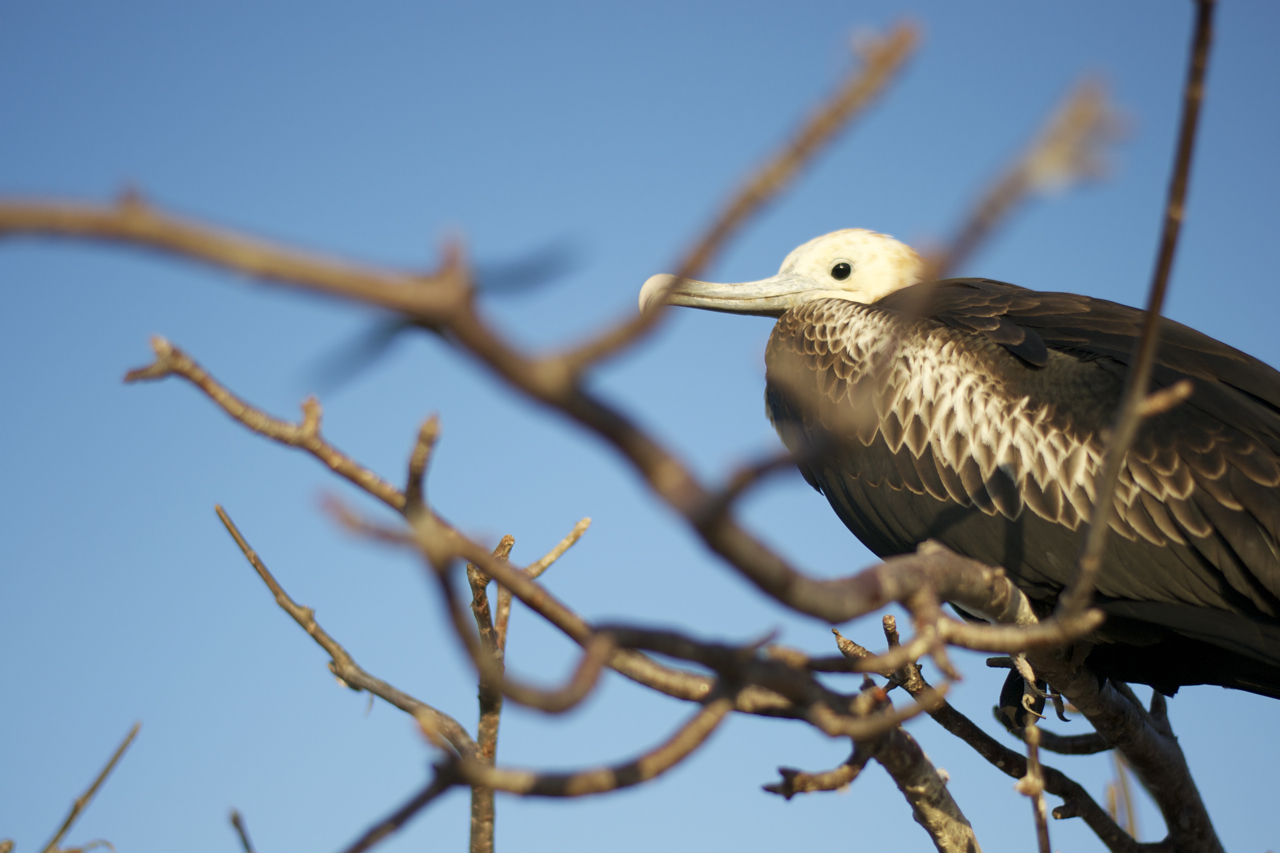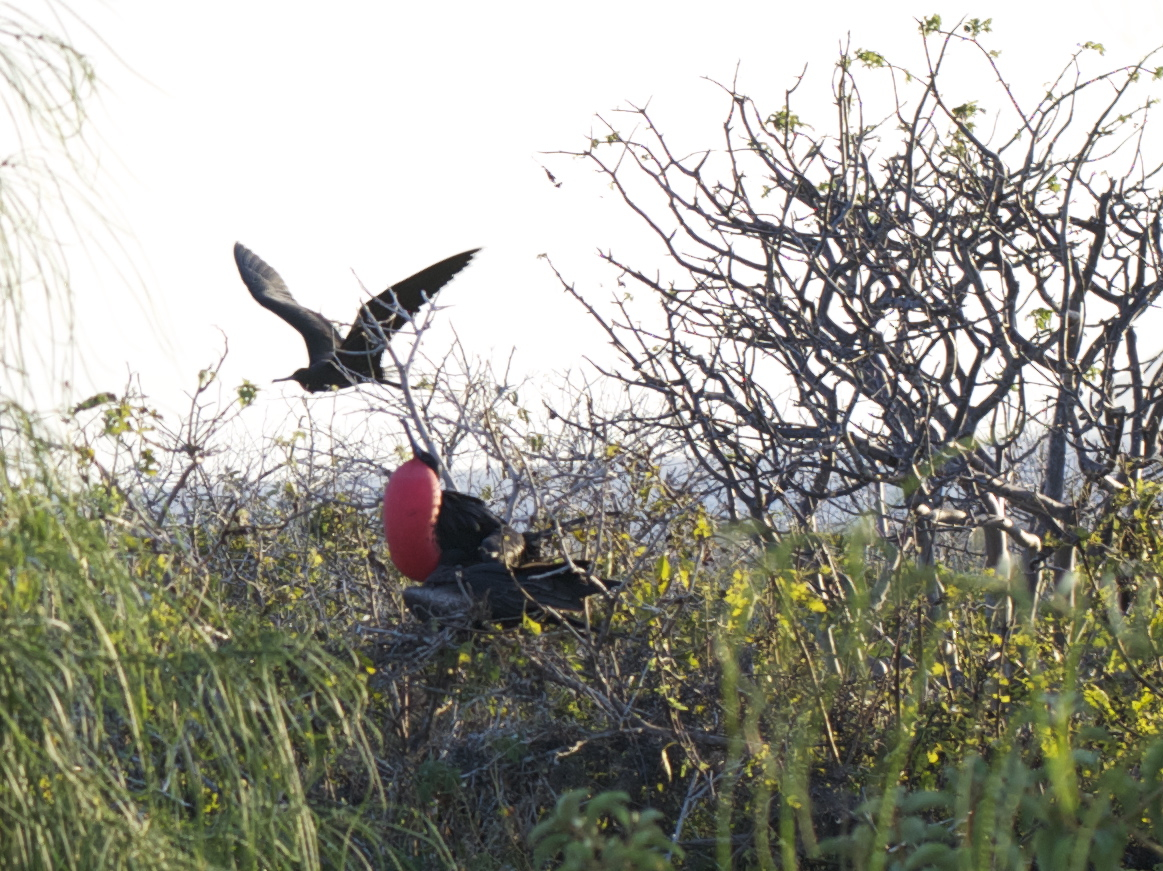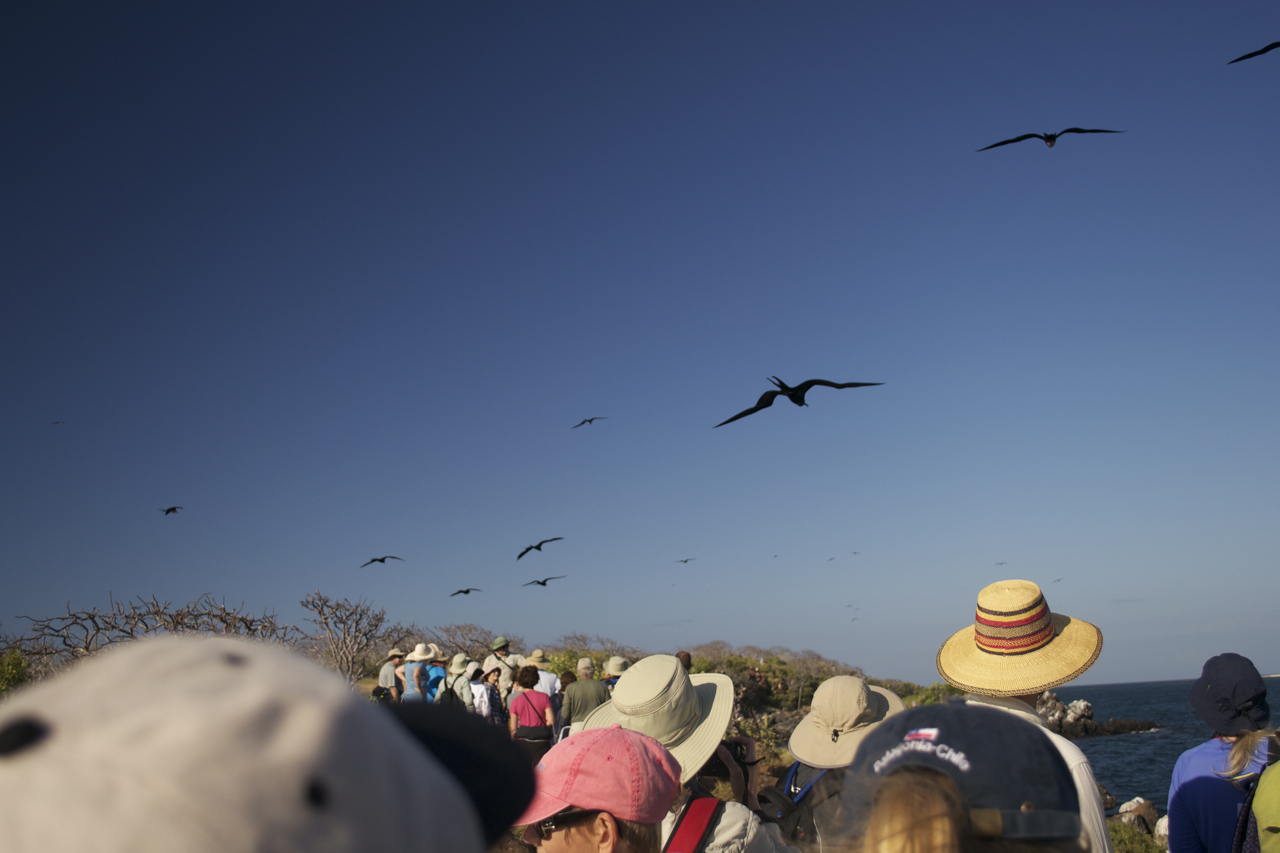This is the third installment of a six-week series about my recent trip to the Galápagos. You can read the first post, about tortoises and donkeys, here, and the second, about eerie mounds of black coral, here.

If you go to the Galápagos, and even if you go, as I did, in a herd of clumsy American tourists, you will at some point feel like a field biologist. Regulations dictate that you be accompanied by licensed guides, and ours reminded me of my favorite college professors: authoritative and rhetorical most of the time, with sudden bursts of passion when they get a whiff of their pet topic.
Within an hour of my arrival, one of the guides launched into the difference between the islands’ endemic, native and introduced species. Endemic species arrived naturally but struggled to survive in the strange environment. Over many generations, they gradually adapted and are now found, in their modified form, nowhere else on earth. Native species also came naturally, but didn’t struggle as much and didn’t need to change. So they’re found in the Galápagos as well as other places. Introduced species did not “naturally” arrive, but were brought in by people.
My guides seemed to be obsessed with these definitions, mentioning them dozens of times over the course of my eight-day visit. When discussing endemic species — such as the marine iguana or Galápagos tortoise — they beamed like proud parents. But introduced species were the shameful family secret. “What are those trees?” someone asked guide Jason while hiking in the highland swamps of Isabela. “Those are cedars,” he said with a long sigh and a sad shake of his head. “Introduced.”
I rolled my eyes. I understand the concept, professor, really I do, now can we please move on? But, like most of the other times I’ve been annoyed with a good teacher, I was wrong. Several weeks and a lot of reading later, I’m finally beginning to get it. If you understand endemism, you understand the value of the Galápagos.

The Galápagos Islands are often called a “natural laboratory” for studying evolution. The archipelago is 600 miles from the mainland and, because of strict laws imposed the past few decades, people are not allowed to live (or even eat) on 9 out of the 14 islands. What’s more, although they all share the same general climate, each island has unique geological features. So the place is isolated, contained; its variables are relatively independent and controlled. Scientists love that stuff.
More to the point: Isolation breeds endemism. A few individuals in a species arrive in a weird new place; they adapt. They rarely encounter compatriots from the mainland to breed with, and so they gradually become more distinct, until they are wholly different. Lots of endemic species — and the Galápagos has hundreds — means lots of opportunities to observe exactly how evolution works.
In other words, the Galápagos is not only a gleaming laboratory, but one brimming with data to be mined.
Darwin, being Darwin, understood this immediately. “The archipelago is a little world within itself,” he wrote in Voyage of the Beagle. “Both in space and time, we seem to be brought somewhat near to that great fact — that mystery of mysteries — the first appearance of new beings on this earth.”
The photos in this post show magnificent frigatebirds, just one of many examples of the power of endemism in the Galápagos. The birds are klepto-parasitic, meaning that rather than diving for their own fish, they force other birds to give them regurgitated catch. (Ewww.) Unlike those other birds, magnificent frigates lack the oil gland needed to keep their feathers waterproof. If they had it, they’d be too heavy. You see, magnificent frigatebirds have evolved to be exceptional flyers. They have teeny-tiny bodies relative to very large wings, allowing them to fly for hundreds of miles in one stretch.

Because they can travel so far, frigatebirds swap genes all over the Caribbean and beyond, from the Galápagos to Florida to Baja. This makes them the go-to example of a native species in the Galápagos. And yet…
Last year, researchers from the Smithsonian Conservation Biology Institute analyzed the DNA of magnificent frigatebirds from nine different locations. All had roughly the same genetic make-up, with one exception: the Galápagos magnificent frigates. Turns out this population, which numbers about 1,000 pairs, has been on its own genetic course for half a million years.
How did the islands create this new subspecies (or, perhaps, new species), when the birds could have flown away anytime? Is it because they prefer to breed where they were born? Or because the islands provide especially nutrient-rich prey? Is it a byproduct of increased choosiness for mates with some Galápagos-specific trait? Nobody’s got a clue, but figuring it out will get us closer to understanding Darwin’s mystery of mysteries. The International Union for Conservation of Nature puts magnificent frigatebirds in a category of “least concern.” But in light of the new data, the researchers argue that the birds are worth protecting. Like everything else on the islands, I’d say.
**
All photos by Randal Vegter
10 thoughts on “Galápagos Monday: World Within Itself”
Comments are closed.